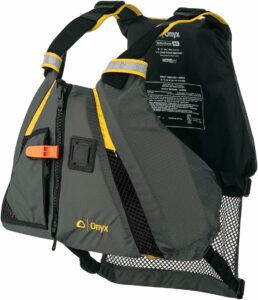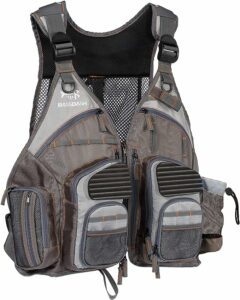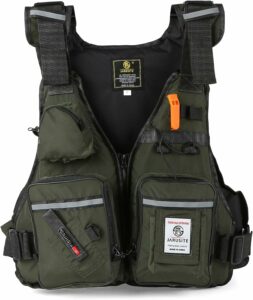Stay Safe and Secure: Choosing the Best Life Jacket for Kayak Fishing
Introduction
Safety should always be a top priority when engaging in water sports like kayak fishing.
A life jacket is one of the most critical safety precautions on the water.
The right life jacket can mean the difference between life and death in case of an accident or unexpected capsize.
This article will explore the key considerations and factors when choosing the best life jacket for kayak fishing.
Understanding the different types, safety standards, fit and sizing, essential features, and budget-friendly options can ensure you stay safe and secure during your kayak fishing adventures.
Provo Green Products is your reliable source for discovering sustainable products that positively impact your life and the environment.
With extensive experience in manufacturing, trades, and construction, Provo Green Products thoroughly researches each product before providing accurate and up-to-date information on its sustainability.
You can trust that you’re getting trustworthy insights to make informed choices whether you’re looking for solar products, electric bikes, eco-friendly products, renewable energy solutions, etc.
Provo Green Products is your go-to destination for finding the right green products for your lifestyle.
Disclosure: We may earn a small commission if you click on one of our links.
This does not affect the pricing of the product whatsoever.
Understanding the Different Types of Life Jackets
Before diving into the specifics of choosing a life jacket for kayak fishing, it’s essential to understand the different types of life jackets available.
Personal Flotation Devices (PFDs) are classified into four main types: Type I, Type II, Type III, and Type V. Each type has its purpose and suitability for different water activities.
Type I PFDs, or offshore life jackets, is designed for open waters where rescue may take longer.
They provide the highest buoyancy and are suitable for rough conditions.
However, there may be more comfortable or practical choices for kayak fishing.
Type II PFDs, known as near-shore buoyant vests, are intended for calm or inland waters where quick rescue is expected.
They offer less buoyancy than Type I but are generally more comfortable and suitable for kayak fishing.
Type III PFDs, commonly referred to as flotation aids, are designed for activities like kayaking, canoeing, and paddleboarding.
They provide excellent mobility and are more comfortable to wear for extended periods.
Many kayakers prefer Type III life jackets due to their versatility and ease of movement.
Type V PFDs are special-use devices designed for specific activities.
They include hybrid inflatable life jackets, fishing vests, and other specialized options.
While Type V life jackets can be suitable for kayak fishing, ensuring they meet the specific requirements and safety standards for water activities is crucial.
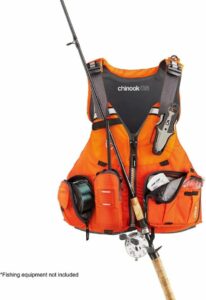
Safety Standards and Certifications
When choosing a life jacket for kayak fishing, looking for safety standards and certifications is essential.
These standards ensure the life jacket meets buoyancy, durability, and performance requirements.
The most commonly recognized safety standard for life jackets is the United States Coast Guard (USCG) approval.
USCG-approved life jackets will bear a label or stamp indicating compliance with the relevant regulations.
Pay attention to the type of life jacket (Type I, II, III, or V) and the intended use specified on the label.
This information will help you determine if the life jacket suits kayak fishing.
While USCG approval is the most recognized standard in the United States, other countries may have their certification systems.
For international kayak fishing trips, familiarize yourself with the applicable safety standards in the destination country.
Considerations for Kayak Fishing Activities
When selecting a life jacket for kayak fishing, it’s essential to consider this activity’s specific needs and challenges.
Unlike other water sports, kayak fishing often involves sitting for extended periods and requires easy access to gear and equipment. Here are a few key considerations to keep in mind:
- Pockets and Storage Options: Look for life jackets with multiple pockets and storage compartments. These will allow you to carry essential items like fishing tackle, hooks, bait, and small tools. Having easy access to your gear can significantly enhance your kayak fishing experience.
- Mobility and Comfort: Kayak fishing requires a certain level of mobility and freedom of movement. Look for life jackets with ergonomic designs, adjustable straps, and flexible foam padding. These features ensure the life jacket fits snugly and allows for comfortable arm and body movements while paddling or casting.
- Breathability and Ventilation: Kayak fishing often involves exposure to the sun for long periods. Look for life jackets made from breathable materials with ventilation features to prevent excessive sweating and discomfort.
- Durable and Water-Resistant Materials: Since kayak fishing involves exposure to water and potentially rough conditions, choosing a life jacket made from durable and water-resistant materials is crucial. Look for options with reinforced stitching, rugged fabrics, and coatings that repel water and resist wear and tear.
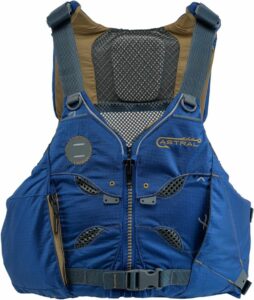
Proper Fit and Sizing
One of the most critical aspects of choosing a life jacket is ensuring a proper fit.
Wrong-fitting life jackets can be uncomfortable, restrict movement, and pose safety risks.
Here’s a step-by-step guide to finding the right fit for your kayak fishing life jacket:
- Measure Your Chest Size: Use a tape measure to determine your chest circumference at the widest point. This measurement will help you select the appropriate size range for your life jacket.
- Consult the Manufacturer’s Size Chart: Each life jacket manufacturer typically provides a size chart that correlates chest measurements with the corresponding life jacket sizes. Refer to the size chart and choose the range that aligns with your measurements.
- Try on Different Models and Brands: Life jacket sizing can vary slightly between different models and brands. Try various options within your size range to find the best fit and comfort for your body type.
- Adjustability Features: Most life jackets have adjustable straps or buckles to customize the fit. Ensure the life jacket has enough adjustability to achieve a snug and secure fit. The life jacket should not ride up or be too loose around your body.
- Perform Range of Motion Tests: Once you have a life jacket on, perform a range of motion test to ensure that it doesn’t restrict your movements. Lift your arms overhead, twist your torso, and simulate paddling motions to assess the life jacket’s comfort and freedom of movement.
Remember that a properly fitted life jacket should feel snug but not overly tight.
It should allow you to move your arms and torso comfortably while providing adequate buoyancy and safety.
Key Features to Look for in a Life Jacket
To ensure maximum safety and functionality, there are several key features you should look for when choosing a life jacket for kayak fishing.
These features can enhance your overall experience and provide added peace of mind on the water. Here are some essential elements to consider:
- Buoyancy and Flotation: The primary purpose of a life jacket is to provide buoyancy and keep you afloat in the water. Check the buoyancy rating of the life jacket, typically measured in pounds or Newtons. Ensure that the life jacket offers sufficient flotation to support your body weight.
- Material Durability and Water Resistance: As mentioned earlier, kayak fishing involves exposure to water and potential abrasions. Opt for a life jacket made from durable materials such as nylon or neoprene, which are resistant to tears and punctures. Additionally, look for water-resistant coatings or treatments to keep the life jacket dry and lightweight.
- Reflective Elements and Visibility Enhancements: Visibility is crucial, especially in low-light conditions or emergencies. Look for life jackets with reflective elements, high-visibility colors, or built-in LED lights. These features will help increase your visibility to other boaters and rescue teams.
- Whistle or Signaling Devices: In an emergency or when you need to attract attention, having a whistle or other signaling devices can be invaluable. Some life jackets come with integrated whistles or attachment points for attaching signaling devices. These can be vital for alerting others to your presence and getting help when needed.
- Comfortable Neck and Collar Design: A life jacket’s neck and collar area can significantly impact comfort, especially during extended periods on the water. Look for life jackets with soft, padded collars that won’t cause chafing or discomfort around your neck.
- Adjustable Straps and Buckles: A life jacket should have adjustable straps and buckles to ensure a secure and customized fit. These features allow you to tighten or loosen the life jacket according to your body shape and size. Adjustable straps make it easier to put on and remove the life jacket.
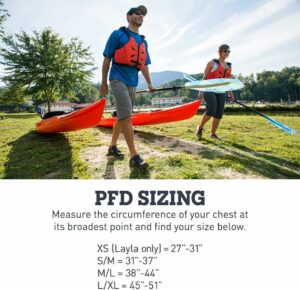
- Drying and Drainage Features: After a day of kayak fishing, your life jacket may get wet. Look for designs with drainage features or mesh panels to allow water to drain and promote quick drying. This helps prevent mold and mildew from developing and keeps the life jacket in good condition.
- Compatibility with Additional Gear: If you use additional gear while kayak fishing, such as fishing rods, tackle boxes, or hydration packs, consider a life jacket with attachment points or loops to secure and carry these items. This feature ensures that your gear is easily accessible and doesn’t interfere with your movements.
Budget-Friendly Options without Compromising Safety
While safety should never be compromised, budget-friendly options that meet the necessary safety standards for kayak fishing are available.
Here are a few tips for finding affordable life jackets without sacrificing quality:
- Compare Prices and Features: Research and compare prices from different retailers, both online and in-store. Look for promotions, discounts, and sales to secure the best price for a high-quality life jacket.
- Consider Older Models: Sometimes, newer models come with higher price tags due to added features or design improvements. However, older models from reputable brands can still provide excellent safety and functionality at a more affordable price.
- Explore Second-hand Options: Check online marketplaces, local classifieds, or kayak fishing forums for second-hand life jackets. Many kayak anglers may sell their gently used life jackets at a lower price. Inspect the life jacket thoroughly for any signs of damage or wear before purchasing.
- Look for Value Bundles: Some retailers offer value bundles or packages that include essential kayak fishing gear and a life jacket. These bundles can provide cost savings compared to purchasing each item separately.
- Seek Recommendations from Fellow Kayak Anglers: Reach out to experienced kayak anglers or join online communities and forums dedicated to kayak fishing. They can provide valuable insights and recommendations on budget-friendly life jacket options that meet safety standards.
Remember, while budget is an important consideration, it should not be the sole determining factor for your safety on the water.
Always prioritize the life jacket’s quality, safety features, and fit over the price!
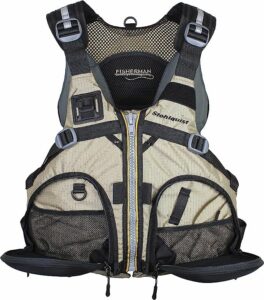
Maintenance and Care Tips
Once you have chosen the best life jacket for your kayak fishing adventures, it’s vital to maintain and care for it properly to ensure its longevity and performance.
Here are some maintenance and care tips to keep in mind:
- Rinse with Freshwater: After each use, rinse your life jacket thoroughly with fresh water to remove any salt, sand, or debris. This helps prevent damage to the materials and keeps the life jacket clean.
- Hang to Dry: Allow your life jacket to dry completely before storing it. Hang it in a well-ventilated area away from direct sunlight or heat sources. Avoid folding or storing the life jacket while it is still wet, as this can promote the growth of mold and mildew.
- Inspect for Damage: Regularly inspect your life jacket for any signs of damage, such as tears, punctures, or loose stitching. Pay special attention to the straps, buckles, and flotation material. If you notice any damage, repair it promptly or consider replacing the life jacket if it is significant.
- Store Properly: When not in use, store your life jacket in a cool, dry place away from direct sunlight and extreme temperatures. Avoid storing heavy objects on top of the life jacket, as this can deform its shape and compromise effectiveness.
Conclusion
Choosing the best life jacket for kayak fishing is critical for your safety and peace of mind.
You can make an informed decision by understanding the different types of life jackets, safety standards and certifications, fit and sizing considerations, key features to look for, budget-friendly options, and maintenance tips.
Remember to prioritize safety over cost and opt for a life jacket that offers comfort, functionality, and buoyancy.
Enjoy your kayak fishing adventures with the right life jacket while staying safe and secure.
Safety! – Safety! – Safety!
Stay in Touch!
I’am a dedicated entrepreneur with many years of experience and an integrity-driven individual who is highly motivated to succeed. Leveraging extensive expertise in manufacturing, construction, and various trades, we can provide a solid foundation for sustainable living. Our meticulous research process guarantees that our information about each product is precise and current, allowing you to make informed decisions. A deep understanding of business operations empowers me to consistently implement improvements that result in ongoing success. Visit site.

